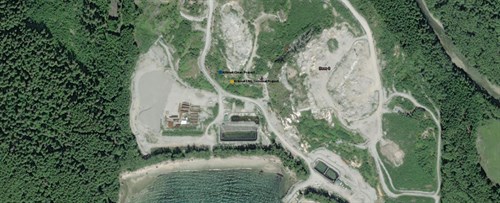For LNG developers, another year of canceled projects
Woodside Petroleum's decision to pull out of a big Canadian LNG project was the latest blow to a sector that has been heralded for its growth prospects worldwide.

(Image Source: EWA)
Demand for super-cooled LNG has surged in recent years as large energy-consuming nations like China and India wean themselves off dirtier coal. Demand is expected to keep hitting fresh highs, but three North American projects have stopped development in the past few months, as customers remain hesitant to sign long-term purchase agreements needed for financing.
LNG terminals, where gas is cooled into a liquid for shipping via tanker, take roughly four years to build. Investors in new projects are wary of oversupply in coming years after Qatar Petroleum, the world's biggest and lowest-cost LNG producer, announced big expansion plans in February.
To be sure, there are still a dozen North American projects in the works that could decide to kick off construction later this year. But that's no different from 2020 and 2019, when numerous projects were delayed or killed. Only one project started construction in 2020.
Global demand rose 0.4% in 2020 to a record 356 million MMtpy of LNG or 47 billion cubic feet per day of natural gas, according to the International Group of LNG Importers (GIIGNL). One billion cubic feet of gas can supply about 5 million U.S. homes for a day.
Woodside has a 50% interest in the Kitimat project in British Columbia, which it said it would sell on Monday. That followed two other projects put on hold this year: Annova's Brownsville in Texas in March and Pembina Pipeline Corp's Jordan Cove in Oregon in April.
Sempra Energy, meanwhile, said it would likely push back a decision to start building its proposed Port Arthur terminal in Texas from 2021 to 2022.
"With the Qataris adding more capacity at a very cheap cost, it does not make financial sense for U.S. companies to be building greenfield projects," said Matt Smith, director of commodity research at ClipperData, a provider of commodities data and analytics. He said it makes more sense to expand sites with existing terminals.
Qatar Petroleum said in February it will boost output from 77 MMtpy now to 110 MMtpy by 2026 and possibly 126 MMtpy by 2027.
"Given the Qataris decision to move forward ... the global LNG markets appear poised for another period of oversupply" that may be dissuading buyers, said Ross Wyeno, lead analyst of Americas LNG Analytics at S&P Global Platts.
Customers have been reluctant to sign long-term purchase agreements after global gas prices fell to their lowest in years during a supply glut in 2019 when a record number of LNG projects entered service. Last year, prices dropped even further, hitting record lows due to coronavirus demand destruction.
Several LNG developers, however, said they remain on track to make decisions to start construction this year.
Pieridae Energy Ltd's CEO Alfred Sorensen said last week that the company's proposed Goldboro project in Nova Scotia was "beginning to look like ‘the last one standing.'" It plans to make its final investment decision by the end of June.
Tellurian Inc's Executive Chairman Charif Souki said last week his company was weeks away from finishing commercialization for the first phase of its proposed Driftwood project in Louisiana.
(Additional reporting by Sabrina Valle in Rio de Janeiro; Editing by Andrea Ricci)

- ADNOC Gas awards $2.1 B in contracts to enhance LNG supply infrastructure
- U.S. Department of the Treasury releases final rules for clean hydrogen production tax credit
- Tecnimont to build waste-to-biogas plant to fuel local kitchens in India
- Indonesia regulator confirms disruption at bp's Tangguh LNG project
- Topsoe, Aramco sign JDA to advance low-carbon hydrogen solutions using eREACT™



Comments